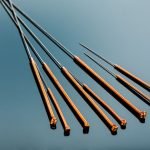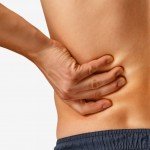Ayurvedic Approaches to Prevent and Manage Alzheimer Disease
Rasayana herbs, sattvic food choices, and panchakram therapies
Virender Sodhi, MD (Ayurveda), ND
Teresa Goldsmith, ND, AWP
Alzheimer disease (AD) is a neuro-degenerative disease that affects more than 4 million Americans.1 It is considered an irreversible disorder and results in progressive impairment of cognition, function, and behavior. Following diagnosis, the mean life span is 7 to 10 years. During this time, there is a decline in the ability to autonomously perform activities of daily living, along with increasing cognitive impairment and behavioral change. The pathogenesis of AD is incompletely understood, and there are multiple mechanisms that contribute to nervous system changes. The histological hallmarks of AD include neuronal and synaptic loss, β-amyloid peptide (Aβ) deposition, and neurofibrillary tangles. The term excitotoxicity is used to describe deranged nervous system stimulation due to excessive glutamate or aberrant response to normal glutamate levels, as well as the presence of neurofibrillary tangles, Aβ deposits, and N-methyl-d-aspartate receptor anomalies. Alzheimer disease brains have been shown to have low levels of acetylcholine, which occurs because of the deposition of Aβ plaques.2 These plaques interfere with neuronal signaling and transmission, which subsequently initiates inflammation in the nervous system and production of reactive oxygen species.2
Allopathic Approach
Allopathic therapy uses pharmacologic and nonpharmacologic interventions to help manage the symptoms and sequelae of the cognitive changes seen in AD. Instituting a social support system for patients with AD is crucial. It is important to have a plan in place for when in-home care is no longer appropriate. Physicians can educate about techniques that help compensate for changing cognition, including organizational skills and memory tools. Environmental adaptations can be made that reduce excessive stimulation. Unfortunately, the benefits of available pharmaceuticals are often offset by high cost, short-term efficacy, and severe adverse effects. Cholinesterase inhibitors, such as donepezil hydrochloride, are the standard pharmacologic therapy used for mild to moderate AD to prevent worsening of symptoms. Seltzer reports that cholinesterase inhibitors “provide at least modest cognitive, behavioural and functional benefit for 6-12 months at all stages of the disease.”3(p881) This is a short time frame in which to expect benefits from the pharmaceutical standard of care. The N-methyl-d-aspartate receptor antagonist memantine hydrochloride decreases glutamate excitotoxicity and is recommended for use in moderate to severe cases of AD. Other interventions include antihypertensive drugs, anti-inflammatory medications, secretase inhibitors, and insulin. Etanercept and brain-derived neurotropic factor are drugs that require high-force intervention for administration (eg, spinal injection or via a cannula into the skull) and have little research proving efficacy in long-term investigations.2 Considering these limitations, an integrative approach using naturopathic medicine could significantly improve AD outcomes in various safe and affordable ways.
Naturopathic Approach
The practice of naturopathic medicine is highly individualized. Treatment plans are multifaceted and include recommendations that range from lifestyle basics to higher-level interventions. Assuring the determinants of health is a key step in any protocol and includes ensuring clean air, food, and environment. This may require lifestyle modifications and detoxification to remove obstacles to cure. Hydrotherapy, homeopathy, and physical medicine are important tools to consider using because they help treat the whole person. A whole foods plant-based diet high in antioxidants and healthy fats is recommended. Supplementation with beta carotene, tocopherols, and B vitamins can offer additional neuroprotective and antioxidant support. Herbal medicines are gaining widespread publicity and popularity, including Ginkgo biloba for improving circulation and Melissa officinalis essential oil for reducing agitation. Other promising natural products to consider include phosphatidylserine, coenzyme Q10, huperizine A, omega-3 fatty acids, and acetyl l-carnitine.2
One promising natural product with research to support use in AD is grape seed extract. This extract is a rich source of protective polyphenols, including proanthocyanidins and resveratrol. In 2008, Wang et al4 reported that a commercially available grape seed polyphenolic extract (MegaNatural-AZ; Polyphenolics, Inc) significantly reduced cerebral amyloid deposition in mouse models of AD. In addition, AD-type cognitive deterioration was attenuated with the use of the grape seed extract. Research by Ono et al5 showed that these polyphenolic extracts inhibited protofibril formation, preprotofibril oligomerization, and protein secondary structure transitions, which ultimately protects against the formation of Aβ plaques. Natural substances that protect against improper protein formation and deposition could have a crucial role in the prevention of AD and help treat the cause, which is in part due to aberrant Aβ deposition.
AD and Ayurveda
According to Ayurveda, everything is composed of a unique proportion of each of the 5 elements found in nature (ether, air, fire, water, and earth). Vata dosha embodies the principle of movement and constitutes ether and air elements. Pitta dosha, made of fire and water, is responsible for transformation and metabolism. Water and earth elements form kapha dosha, which is responsible for structure and stability. According to Ayurveda, AD can result from the following 3 main factors: dosha imbalance, imbalance of the mind, and karmas (which are the results of previous actions). Because nerve signal transmission necessitates movement, many mental and cognitive disorders are caused by an imbalance in the vata dosha. However, each case must be assessed according to the individual to accurately determine which doshas are out of balance.
In Ayurveda, the mind (manas) is seen as the link between the information gathered by sense organs (indriyas) and the greater intelligence (buddhi). The mind is also responsible for sending out the proper message from buddhi to cause action (karmendriyas). The mind is described to be in 1 of the following 3 states: sattva, rajas, or tamas. A sattvic mind has the best memory and is alert, enthusiastic, courageous, stable, and intelligent. Rajas describes a mental state dominated by attachments and is characterized by anger, passion, greediness, constant action, excessive work, and anxiety. The tamasic mind tends to develop delusions and is described as dull, ignorant, and slow. Tamasic characteristics of AD include slow cognition, poor memory, and difficulty performing tasks. Rajasic imbalances present during frustrated outbursts and periods of agitation, often termed sundowning.
One of the most important factors for promoting dosha balance and a sattvic mind is nutritional intake. A sattvic diet is recommended for AD and incorporates the most nutritious foods according to Ayurveda. Sattvic food is vegetarian, simple, and freshly prepared from foods in season. It is crucial to consume sattvic foods that contain no genetically modified organisms and are organic to prevent exposure to environmental toxins and manipulated genetic materials that may aggravate disease. Common examples include milk, butter, ghee, almonds, ripe fruits, cereal grains, green vegetables, and squash. Because obesity is a worldwide epidemic, caution should be taken in recommending consumption of the fattier sattvic foods, and an emphasis on whole grains, fruits, and vegetables may be more appropriate. Mild seasonings, including turmeric, cinnamon, fennel, and cardamom, are considered sattvic. Lim et al6 found that curcumin derived from the curry spice turmeric significantly lowered oxidized proteins, interleukin 1β (a proinflammatory cytokine), insoluble Aβ, soluble Aβ, and plaque burden in mice. Epidemiological investigations have shown a correlation between consumption of curcumin, which is a phenolic compound like resveratrol, and decreased AD risk.7 Compared with the rest of the world, the Indian population has a low incidence of AD cases, which may be owing to high consumption of turmeric and a tradition of close-knit families.
Foods that promote rajas and tamas mind states should be avoided. Foods that cause a dull state of mind have low amounts of prana (life energy) inside. These include overripe, overcooked, highly processed, frozen, and refined foods. Most junk foods fall into this category. Foods that increase rajas include meat, pungent foods, caffeine, alcohol, fish, onions, garlic, and foods in the Solanaceae family.
Lifestyle and social factors have been shown to have a role in the development of AD. Alzheimer disease is more common in cultures where there is social isolation and is less common where there is a close family structure. Individuals who have pets live longer, which may be owing to the unconditional love that they get from animals. Individuals with physically active cultures also get less AD. Yoga, breathing exercises, and meditation can aid in the prevention of AD. Alternate nostril breathing is an excellent tool to prevent AD.
Ayurvedic Herbs
Herbs that fall into the Ayurvedic classification of medhya rasayana provide excellent support for AD. Medhya is Sanskrit for mind. In Ayurveda, rasayana denotes the ability of a substance to act as a health tonic by promoting strength, bolstering immunity, and improving energy. Two medhya rasayana herbs gaining renown for cognitive support are ashwagandha (Withania somnifera) and brahmi (Bacopa monnieri).
Ashwagandha has gained popularity within naturopathic circles for stress and adrenal support. The root of this annual plant has been used for thousands of years to improve vitality and strength. Research is beginning to show that ashwagandha has significant protective antioxidant activity. Withanamide A and withanamide C from the fruit of ashwagandha were shown to protect PC-12 rat neuronal cells from Aβ damage.8 Withanolide A, withanoside IV, and withanoside VI restored synapses in addition to axons and dendrites in cortical neurons after injury induced by Aβ25-35; the study9 showed less memory impairment, neurite atrophy, and synaptic loss in the cerebral cortex and hippocampus of mice models treated with compounds from ashwagandha compared with controls. The study demonstrated that compounds in ashwagandha can promote construction of new neuronal networks. Oral administration of withanoside IV (10 µmol/kg/d) significantly improved memory deficits and prevented loss of axons, dendrites, and synapses in mice injected with Aβ25-35. In another study,10 sominone, an aglycone and a main metabolite of withanoside IV, significantly induced axonal and dendritic regeneration and synaptic reconstruction in damaged cultured rat cortical neurons.
Bacopa monnieri, a plant belonging to the Scrophulariaceae family, is used in Ayurvedic medicine to improve intelligence and memory. The effects of B monnieri on cognitive function and neurodegeneration in an animal model of AD induced by ethylcholine aziridinium ion (AF64A) suggest that B monnieri is a potential cognitive enhancer and neuroprotectant.11 Oral administration of the alcoholic extract of B monnieri at doses of 20, 40, and 80 mg/kg
via feeding needle was given to male Wistar rats for 2 weeks before and 1 week after the bilateral intracerebroventricular administration of AF64A. The study tested for spatial memory using the Morris water maze test and analyzed the density of neurons using histological techniques 7 days after AF64A administration. Rats receiving B monnieri extract showed improved escape latency time (P < .01) in the Morris water maze test. In addition, the reduction in neurons and cholinergic neuron densities typically seen on administration of AF64A was mitigated by this extract. In 2010, the results of a randomized double-blind placebo-controlled study12 were published in Australia comparing the use of a B monnieri extract (300 mg/d) vs placebo in older persons. This study found a statistically significant improvement in verbal learning, memory acquisition, and delayed recall in the Bacopa group compared with controls. Further study of the neuroprotective benefits of Bacopa are warranted for its therapeutic potential in AD and other forms of dementia and neurodegenerative disease.
Other single herbs and formulations traditionally used in Ayurveda that show promising results in modern AD research include Centella asiatica, Emblica officinalis (amla), Mucuna puriens, and triphala (a combination of E officinalis, Terminalia chebulia, and Terminalia bellerica). Because oxidative stress is a large component of neurodegenerative change, antioxidant activity in food and herbal medicine can have a crucial role in protection against AD. Kumar et al13 found a protective effect of C asiatica against colchicine-induced cognitive impairment and associated oxidative damage in male rats when administered for 25 days. Many NDs are familiar with the use of Mucuna pruriens for antiparkinsonian and dopamine effects. Antioxidant activity was demonstrated in the research by Dhanasekaran et al14 showing that Mucuna exhibits divalent iron chelating activity and significantly inhibits oxidation of deoxyribose sugar and lipids. A review article by Baliga highlights the traditional use of triphala and some current research, stating that “Triphala is an antioxidant-rich herbal formulation and possesses diverse beneficial properties,” including cancer prevention.15(p1301)
Purification (Panchakarma)
Panchakarma refers to detoxification supervised by an Ayurvedic physician. Preparation for panchakarma includes lifestyle and diet modification, the use of medicated oils to lubricate the system, and sweating. Using gas chromatography analysis of 9 polychlorinated biphenyl (PCB) congeners and 8 pesticides, Herron and Fagan16 demonstrated that serum PCB levels were significantly lower in participants who underwent lipophil-mediated detoxification (panchakarma) than in control subjects. After 5 days of treatment, the mean levels of PCBs decreased by 46%, and beta-hexachlorocyclohexane levels were decreased by 58%.
Medicated enema (basti) is therapeutic for vata disorders. Purgation is appropriate for pitta disorders, and medicated emesis is used to remove unwanted kapha from the system. Nasya, the nasal administration of herbal medicine like Acorus calamus (vacha), has been found useful for brain health and psychological disorders. After purification, patients are eased back into a normal food routine and are given procedures and Ayurvedic medicines to strengthen and tonify the system. Other useful bodywork therapies that are more commonly available in the United States for AD include abhyanga and shirodhara. Abhyanga is oil massage performed by 2 practitioners working in a synchronized fashion. A stream of warm oil is poured onto the forehead during shirodhara, which creates a calming effect on the mind.
Naturopathic Conclusion
In conclusion, NDs can incorporate traditional Ayurvedic therapies into their practice to help prevent and treat neurodegenerative diseases like AD and other forms of dementia. Rasayana herbs, sattvic food choices, and panchakarma therapies can serve as safe adjunctive management strategies for the prevention and treatment of neurodegenerative diseases. At our clinic, patients with AD have shown greater improvement in resuming their cognitive functions after comprehensive Ayurvedic treatment, including herbal preparations (including amla, ashwagandha, curcumin, triphala, and M pruriens), panchakarma detoxification treatments, yoga, pranayama, and meditation. A 75-year-old patient who was diagnosed as having AD was able to play bridge and balance her checkbook after just 3 months of treatment with this protocol!
Virender Sodhi, MD (Ayurveda), ND holds an MD (Ayurveda) and an ND from Bastyr University, Seattle, Washington. He has practiced medicine for over 31 years and is currently practicing at the Ayurvedic and Naturopathic Medical Clinic in Bellevue, Washington. He is an adjunct faculty member of Bastyr University and is CEO of Ayush Herbs, Inc.
 Teresa Goldsmith, ND, AWP is the 2011-2012 resident physician at the Ayurvedic and Naturopathic Medical Clinic, under the direction of Dr Virender Sodhi. She studied naturopathic medicine at Bastyr University and earned an Ayurvedic Wellness Practitioner certificate from Kerala Ayurveda Academy.
Teresa Goldsmith, ND, AWP is the 2011-2012 resident physician at the Ayurvedic and Naturopathic Medical Clinic, under the direction of Dr Virender Sodhi. She studied naturopathic medicine at Bastyr University and earned an Ayurvedic Wellness Practitioner certificate from Kerala Ayurveda Academy.
Hebert, L., Scherr, P., Bienias, J., Bennett, D., Evans, D. Alzheimer disease in the US population – Prevalence estimates using the 2000 census. Arch Neurol. 2003;60:1119-1122.
Wollen KA. Alzheimer’s disease: the pros and cons of pharmaceutical nutritional botanical and stimulatory therapies, with a discussion of treatment strategies from the perspective of patients and practitioners. Altern Med Rev. 2010;15(3):223-244.
Seltzer B. Is long-term treatment of Alzheimer’s disease with cholinesterase inhibitor therapy justified? Drugs Aging. 2007;24(11):881-890.
Wang J, Ho L, Zhao W, Ono K, Rosensweig C, Pasinetti GM. Grape-derived polyphenolics prevent Aβ oligomerization and attenuate cognitive deterioration in a mouse model of Alzheimer’s disease. J Neurosci. 2008;28(25):6388-6392.
Ono K, Condron MM, Ho L, et al. Effects of grape seed derived polyphenols on amyloid β–protein self-assembly and cytotoxicity. J Biol Chem. 2008;283(47):32176-32187.
Lim GP, Chu T, Yang F, Beech W, Frautschy SA, Cole GM. The curry spice curcumin reduces oxidative damage and amyloid pathology in an Alzheimer transgenic mouse. J Neurosci. 2001;21(21):8370-8377.
Sharma RA, Gescher AJ, Steward WP. Curcumin: the story so far. Eur J Cancer. 2005;41(13):1955-1968.
Jayaprakasam B, Padmanabhan K, Nair MG. Withanamides in Withania somnifera fruit protect PC-12 cells from β-amyloid responsible for Alzheimer’s disease. Phytother Res. 2010;24(6):859-863.
Tohida C. Overcoming several neurodegenerative diseases by traditional medicines: development of therapeutic medicines and unraveling pathophysiological mechanisms [in Japanese]. Yakugaku Zasshi. 2008;128(8):1159-1167.
Kuboyama T, Todha C, Komatsu K. Withanoside IV and its active metabolite, sominone, attenuate Aβ25-35–induced neurodegeneration. Eur J Neurosci. 2006;23(6):1417-1426.
Uabundit N, Wattanathorn J, Mucimapura S, Ingkaninan K. Cognitive enhancement and neuroprotective effects of Bacopa monnieri in Alzheimer’s disease model. J Ethnopharmacol. 2010;127(1):26-31.
Morgan A, Stevens J. Does Bacopa monnieri improve memory performance in older persons? results of a randomized, placebo-controlled, double-blind trial. J Altern Complement Med. 2010;16(7):753-759.
Kumar A, Dogra S, Prakash A. Neuroprotective effects of Centella asiatica against intracerebroventricular colchicine-induced cognitive impairment and oxidative stress. Int J Alzheimer Dis. 2009;2009:pii: 972178. http://www.ncbi.nlm.nih.gov/pmc/articles/PMC2925281/?tool=pubmed. Accessed December 19, 2011.
Dhanasekaran M, Tharakan B, Manyam BV. Mucuna pruriens shows antioxidant and metal chelating activity. Phytother Res. 2008;22:6-11.
Baliga MS. Triphala: Ayurvedic formulation for treating and preventing cancer: a review. J Altern Complement Med. 2010;16(12):1301-1308.
Herron RE, Fagan JB. Lipophil-mediated reduction of toxicants in humans: an evaluation of an Ayurvedic detoxification procedure. Altern Ther Health Med. 2002;8(5):40-51.











